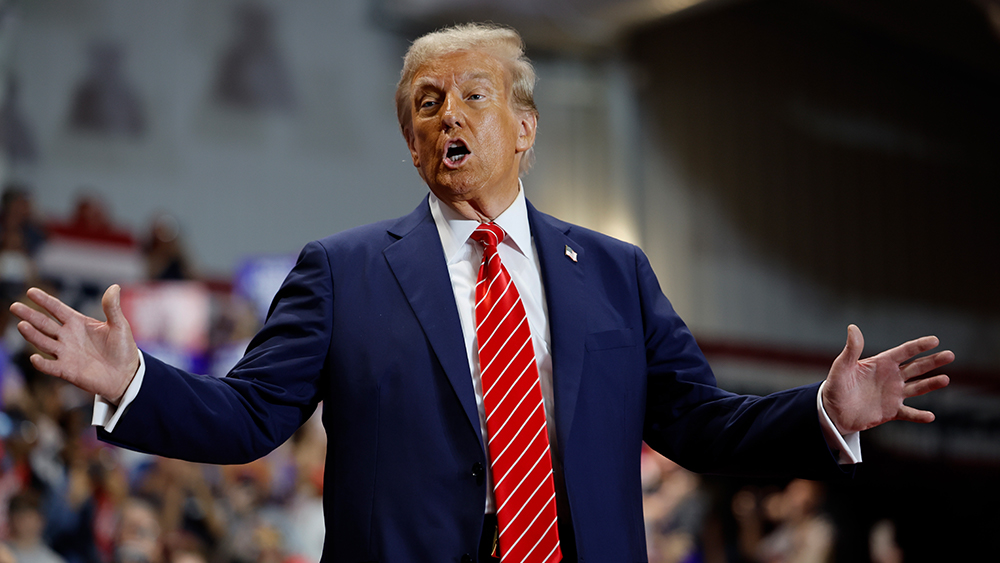
During the campaign period, Trump vowed to impose a 60 percent to 100 percent tariff on imports from China and a 10 percent to 20 percent tariff on goods from all other trading partners of the United States. Trump has been claiming that tariffs will help boost America's manufacturing power. (Related: Walmart, believe it or not, sells some of the healthiest and freshest produce, research finds.)
However, the think tank the Peterson Institute for International Economics warned in May that tariffs of this scale would only cost middle-class households between $1,700 and $2,600 annually, as importers often pass a portion of the increased costs from such taxes to buyers. Economic and retail experts also warned that this could significantly raise costs for businesses and consumers alike.
"Despite Trump's assertions to the contrary, tariffs are paid by the companies or entities importing goods and not by the countries themselves," said retail expert Neil Saunders, the managing director of Global Data. "This means the cost of buying products from overseas, whether directly or as an input for manufacturing, would rise sharply."
Liberal economist Larry Summers echoed a similar statement: "There is a very substantial risk that the president will attempt to implement what he talked about. If he does, the consequences are likely to be substantially greater inflation than what was set off by the excessive Biden stimulus."
In line with this, Walmart, which sources two-thirds of its products from U.S. manufacturers, acknowledged that these tariffs could inevitably lead to higher prices for inflation-weary shoppers.
"We never want to raise prices," Rainey told CNBC News on Nov. 19. "Our model is everyday low prices. But there probably will be cases where prices will go up for consumers." But then, Rainey did not specify which products might be affected by the tariffs.
Trump prepares for the implementation and potential consequences of his proposed tariffs
Critics claimed that the current tariff proposals are far more aggressive compared to the smaller-scale tariffs on items like washing machines, solar panels, steel and aluminum (with some exceptions for Canada and Mexico) that Trump implemented in his first term.
As a response, Trump advisers are exploring a strategic approach that would connect the tariff rollout with upcoming tax reform negotiations in 2025. Trump's team views tariff revenue as a potential offset to extend or make those tax cuts permanent as provisions of the 2017 Tax Cuts and Job Act are set to expire in 2025. This extension would double the standard deduction, increase the Child Tax Credit and keep the exemptions on estate taxes.
Additionally, the Center for a Responsible Budget disclosed that the extension would forgo $5.3 trillion in government issues while ending taxes on tips, overtime pay and Social Security benefits would cost trillions more. But then, the proposed tariffs would raise $2.7 trillion.
"Lower taxes and paying off debt," Trump said, after his former economic adviser Larry Kudlow asked him about his plans with the revenue from new tariffs.
"The way that President Trump looks at tariffs are not in isolation. They are a fundamental and core part of his broader economic strategy, which also includes tax cuts, deregulation, energy diversity," said Kelly Ann Shaw, a former Trump official who is now a partner at law firm Hogan Lovells.
Watch the video below about Trump's tax cuts when he was still president five years ago.
This video is from the NewsClips channel on Brighteon.com.
More related stories:
Walmart faces social media backlash over "Pride Always Collection" for Pride Month.
Walmart stock plummets amid corporate warning that consumer spending is slipping.
Walmart to reopen with a POLICE SUBSTATION to combat SURGING THEFT cases.
Walmart to close four "unprofitable" stores in Chicago as America’s economic decline accelerates.
Walmart store closures leave local communities grappling with economic and social consequences.
Sources include:
Please contact us for more information.

















